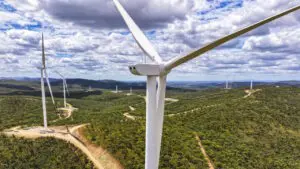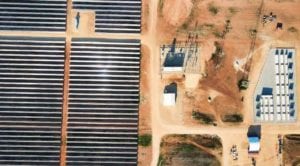Researchers at the Queensland University of Technology have demonstrated what they say could be a safer, more stable and more efficient energy storage solution than chemical-based batteries – including lithium-ion – using bundles of diamond nanothreads.
The diamond nanothread (DNT) bundles, described by the QUT team as a collection of ultrathin one-dimensional carbon threads, store energy when twisted or stretched, and then release that energy as the twisted bundle unravels.
Dr Haifei Zhan, from the QUT Centre for Materials Science, said he and his team had successfully modelled the mechanical energy storage and release capabilities of a diamond nanothread (DNT) bundle.
“If you can make a system to control the power supplied by the nanothread bundle it would be a safer and more stable energy storage solution for many applications,” Dr Zhan said.
“Unlike chemical storage such as lithium-ion batteries, which use electro-chemical reactions to store and release energy, a mechanical energy system itself would carry much lower risk by comparison,” Dr Zhan said.
“At high temperatures chemical storage systems can explode or can become non-responsive at low temperatures. These can also leak upon failure, causing chemical pollution.
Dr Zhan’s team found the DNT bundle’s energy density – how much energy it could store for its mass – was 1.76 MJ per kilogram, which amounts to between 4-5 orders higher than a conventional steel spring, and up to three times compared to Li-ion batteries.
“Energy dense materials are very important to many applications, which is why we are always looking for lightweight materials that still perform well,” he said.
The research team – whose findings were published by Nature Communications in the paper: ‘Ultra-high Density Mechanical Energy Storage with Carbon Nanothread Bundle’– believe the applications for carbon nanothread bundles as an energy source could be endless.
“The nanothread bundles could be used in next-generation power transmission lines, aerospace electronics, and field emission, batteries, intelligent textiles and structural composites such as building materials,” Dr Zhan said.
“Carbon nanothread bundles could be made into twist-spun yarn-based artificial muscles that respond to electrical, chemical or photonic excitations.”
He and his team are now planning production of an experimental nanoscale mechanical energy system as proof of concept.
They plan to spend the next two to three years building the control mechanism for the system to store energy – the system which controls twisting and stretching of the nanothread bundle.
Dr Zhan is from the School of Mechanical, Medical and Process Engineering. This research was funded through the ARC Discovery program and was a collaboration between the QUT Centre for Materials Science, Agency for Science, Technology and Research in Singapore, and the National University of Singapore.
RenewEconomy and its sister sites One Step Off The Grid and The Driven will continue to publish throughout the Covid-19 crisis, posting good news about technology and project development, and holding government, regulators and business to account. But as the conference market evaporates, and some advertisers pull in their budgets, readers can help by making a voluntary donation here to help ensure we can continue to offer the service free of charge and to as wide an audience as possible. Thank you for your support.










